Last updated on Oct 15, 2025
14 Popular Fantasy Tropes (and How to Revitalize Them)
Martin Cavannagh
Head of Content at Reedsy, Martin has spent over eight years helping writers turn their ambitions into reality. As a voice in the indie publishing space, he has written for a number of outlets and spoken at conferences, including the 2024 Writers Summit at the London Book Fair.
View profile →Fantasy tropes are recurring images, themes, and devices that enrich a fantasy story with common conventions expected in the genre.
When writing within a genre, authors can find themselves straddling a fine line: too many tropes will push a book into cliché territory, while stories that don’t feature a single popular trope can deny readers what they crave most in a genre read.
However, it’s important to remember that tropes are popular because they often contain elements of a universal relatability — and the greatest fantasy novels make use of those elements.
For this post, we spoke with Lauren Humphries-Brooks and Lesley Jones, two of Reedsy’s fantastic Marketplace fantasy editors. They have us their insights on characters,
PRO-TIP: Ever wanted to find out which book genre you are? Take our 1-minute quiz below to see!
📚
Which book genre are you?
Find out here! Takes one minute.
Character tropes
At their heart, stories are about characters representing a fictionalized aspect of human nature — fantasy is no exception. The genre utilizes archetypes heavily, and this is not a bad thing if the alignment of your characters' growth works with the narrative arc. One of the pleasures of writing is making ideas feel fresh — nailing this will help your story shine.
Q: How can writers use stereotypes and tropes to their benefit when creating a character?
Suggested answer
Well, stereotypes and tropes exist because they are the comfort food of readers, and should be the comfort food of writers too. Not to the extent that you write cliche stories by overusing the same old thing. But by the fact that their presence in certain story types is expected and even desired by fans of that story type, so to try and write without them can leave readers unsatisfied and the story feeling incomplete.
There are great books out there on this, John Truby in particular has a great one out. Knowing the stereotypes of a heroes journey, for example, gives you lots of options for side characters and supporting characters to help a hero on certain types of quests. The tropes are the expected encounters and obstacles that hero will encounter along the way.
If you start by mapping these out and identifying which are required (tropes most of all) and which work best for your story but are optional (stereotype characters) then you can take them and twist them in unique and interesting ways, even flip them around in timeline or approach in ways that make it clear they are there (and meet reader expectations and preferences) while still avoiding cliche expectation and creating interesting and unique characters, world, and stories that captivate readers.
Bryan thomas is available to hire on Reedsy ⏺
Trope = yes
Stereotype = no
A stereotype is an oversimplified view of a type of person, based on one aspect of their identity, like race or gender or hair color or where they're from. It's important to know stereotypes so you can avoid them in your writing, both so you won't be generic and so
Tropes, on the other hand, are like adding sugar to cake, rather than salt: You want to know what your audience came for, so you can give it to them!
Tropes are things with universal appeal that audiences come back for time and time again. (Not to be confused with a cliche, which is just something that has been overused until it's cringey. For instance, the villain in a YA novel being a mean blonde cheerleader is both a cliche and a stereotype. But a trope might be that the main character is an underdog who manages to win the heart of the most high-status boy in school!) Examples: enemies to lovers, amateur detective, chosen one, only one bed...
Intelligent use of proven tropes, combined in a new and unique way, are the fastest way to genre writing success!
Michelle is available to hire on Reedsy ⏺
A trope is something that is instantly familiar to readers: a character type, setting, plot point, or style of writing that is recognizable and tied to a specific genre.
For example, one familiar romance story structure is the “enemies to lovers” plot. This pattern is immediately recognizable to readers, and although it is used often, writers are still finding new and unique ways to spin it, and readers still love engaging with it.
Another popular trope is that of “The Chosen One.” Think about it: Both Luke Skywalker and King Arthur find a magical sword, receive the guidance of an older, wiser mentor, and go on a journey to storm a stronghold to save a princess. Even though the building blocks are the same, the stories are vastly and entirely different…and centuries apart!
There are hundreds of ways to apply this trope and come out with a unique and fresh story.
Tropes are the conventions, ideas, or motifs that make up these basic building blocks of all storytelling. In order to tell a fantastic story, tropes are necessary (and not to be confused with clichés, which are devices, expressions, or phrases that have been used so often and in so many places that readers have become tired of them, and desensitized to them). But why are they necessary?
Well, tropes are baked into every genre that we know and love. If you’re writing a western novel, odds are you might have a lone cowboy or a bumbling sheriff in there. If you’re writing a thriller or mystery novel, you might find yourself creating a gritty, lone-wolf detective, who acts first and asks questions later. Just because these tropes have been used before, doesn’t mean they’re tired!
If you’re writing in a specific genre, in order to use tropes effectively, you should be intimately familiar with the tropes of that genre. Knowing them inside and out means you’ll have your best shot at subverting them and spinning them in new ways that readers will enjoy (and avoid veering into cliché territory).
Think of books in the genre that you’ve read before. Was there one that you didn’t like? Ask yourself: What specifically made you dislike it? It might be that a trope wasn't used effectively, and if you can identify exactly what disappointed you about the way that trope was used, it can help you discover what you wished that writer might have done differently. And then: poof! Suddenly you have a thread of inspiration you can pull on to get some ideas for your own story.
Remember: tropes are patterns. And patterns can be twisted, bent, and manipulated. Just be careful not to break the pattern, or you risk readers finding it difficult to relate to a trope they cannot recognize and therefore relate to.
Writers just like you are still finding fresh ways to put a spin on tropes of all kinds, and using those building blocks to build entirely new and unexpected things for us to read!
Lesley-anne is available to hire on Reedsy ⏺
When it comes to building characters, tropes and stereotypes get trashed. Authors shy away from them, not wanting their stories to sound stale because they're leaning on well-worn tropes. But applied sparingly, these storytelling crutches can enrich your characters, allow readers to jump in easily, and even lay the foundation for surprise and depth.
Tropes are a short-cut for your readers. They give readers a feeling of who a character is and where they stand in the story. A "mentor," for instance, gives a feeling of guidance, a "reluctant hero" gives a feeling of inner conflict, and a "grizzled detective" gives a sense of experience and exhaustion. These archetypes shave space out of your storytelling so readers can catch on to relationships and dynamics immediately. The art is to combine them with unique characteristics that make your character stand out.
Stereotypes are worse. They can establish context rapidly, but they can also be lazy or toxic if they are not challenged. The trick is to use them as a springboard, and not an endpoint. A character who holds the "shy bookworm" description might secretly be a social master manipulator. That interplay between expectation and reality keeps things interesting and provides depth.
Another great way to use tropes is to subvert expectations. Use a "princess in distress" who saves herself or a "charming rogue" who has imposter syndrome. By turning the expected tropes on their head, you catch the reader off guard without losing respect for those conventions.
Ultimately, the most compelling characters are born from layers beyond the trope. Surface traits like charm, wit, or wisdom draw people in, but motivation, flaw, and contradiction create a character. Tropes will also support your themes—whatever they may be, from redemption to generational insight to ambition's cost—adding cohesiveness to your narrative but still permitting complexity.
The issue happens when writers rely on tropes or stereotypes without questioning them. Does every single one serve the story, add depth, and make your character more human? Used consciously, tropes and stereotypes are not clichés—they are tools used to make your characters immediately recognizable, resonant at a thematic level, and unforgettable.
John is available to hire on Reedsy ⏺
While it's worth noting the use of tropes and stereotypes can be comforting -- I love an enemies-to-lovers, "Who did this to you?" trope in romance, and the Chosen One in young adult makes me nostalgic for the golden age of dystopian; however, you can also use stereotypes and tropes by subverting them.
A great example is Victoria Aveyard's RED QUEEN. I won't reveal the twist, but it took a certain romantic stereotype, crushed it to pieces, and surprised readers in a way that still gives me (delightful) trauma! Another more general example is the Game of Thrones series and the way that George RR Martin kills characters off left and right. Those you thought were heroes or "chosen" are not guaranteed to be around long enough to fulfill any destiny.
So by all means, embrace tropes and stereotypes to give readers what they want; however, think about surprising them a little bit. See how you can tell a different story.
Grace is available to hire on Reedsy ⏺
There is a common misconception within writing circles that "trope" = bad or cliche. While yes, certain tropes and character traits can become overused and cliche, tropes are more like reader expectations when they pick up a book from a certain genre. For instance:
- In romance, tropes are things like friends to lovers, enemies-to-lovers, he falls first, grumpy neighbor
- In YA fantasy, tropes can be things like the Chosen One, Love Triangles, or Hidden Magic
- In middle grade, tropes can be the power of friendship, magical animals, magical academies
While not all books in these genres include all of these things, and while these things can certainly be cliche if you don't put your unique take on it, they are what readers enjoy about a genre. After all, isn't that why you read a certain genre, because there are tropes and elements within that you enjoy?
The way to use these stereotypes and tropes to your benefit is to use them as a framework, understanding how they operate and why readers enjoy them. Then, sprinkle your unique author magic on them. How you describe characters, the dynamic between two characters, how certain elements show up or are utilized, all these can be unique to you and your book. You're not looking to reinvent the wheel, but rather give it a new coat of paint, your coat of paint, so that you write the story you want while delivering a satisfying reader experience.
Sean is available to hire on Reedsy ⏺
Note: Throughout this article, we’ll use popular books as examples, so there may be some spoilers.
1. The Chosen One
A character who is alone capable of fulfilling an important purpose, and whose responsibility is to resolve the plot’s main conflict — which will often be to save the world.
Example: Harry Potter and the Sorcerer's Stone by JK Rowling
Before he becomes the ‘Chosen One’ who defeats the evil wizard Lord Voldemort, Harry Potter is simply a boy who lives under the stairs at the home of his cruel aunt and uncle. Receiving an invitation to join Hogwarts School of Witchcraft and Wizardry, he quickly learns that even within this new magical world, he’s someone special: the famed ‘Boy Who Lived.’
Top Tip: There’s more than one flavor of savior
Editor Lauren Humphries-Brooks, whose clients include award-winning authors, Pulitzer nominees, and new authors, warns against adhering strictly to the Chosen One trope and offers advice to make it your own. “This is one of the most common fantasy tropes which has been overdone in recent years.
“However, instead of playing it straight, you can make it more interesting — if the idea is right. An example might be a protagonist who thinks they’re the Chosen One, but actually isn’t. Maybe they really want to be the chosen one, then discovers it’s way worse than they expected.”
2. The Secret Heir
An orphan ends up being the long-lost scion to a royal throne. This fantasy character is often raised on a farm or another humble situation that contrasts their true lineage. Maybe they lost their parents at a young age and were sent away for their own protection. Perhaps they were switched at birth in some sort of hilarious misunderstanding. Maybe their mother had a summer fling with an undercover prince in her gap year.
Example: The City of Brass by In S.A. Chakraborty
In this acclaimed fantasy novel, our protagonist is Nahri, a con artist and orphan (naturally) in 1700s Cairo who accidentally summons forth a djinn. When the spirit informs Nahri of her noble heritage, she must use her street-earned wit and guile to challenge and depose the current king and other challenging characters who stand in her path.
Top tip: Make their claim believable
While the idea of a street rat with a claim to the throne is appealing to many readers, fantasy editor Lesley Jones urges authors to make it believable. “No matter what your reader is meant to believe, no matter what rules govern your world, it must feel possible.
"However your protagonist is connected to this lineage must ring true.”
Want to relive your fantasy-filled childhood? Check out the 60 best children's fantasy books right here, with classics from Lewis, Tolkien, Rowling, and more!
3. The Evil Overlord
Fire and brimstone, darkness and inhospitable lands, the Evil Overlord usually lives in a realm that reflects their wicked intentions, surrounded by their minions and followers. The Evil Overlord is also often bent on world domination. As opposed to anti-villains who are morally grey, the Evil Overlord is, well, pure evil.
Q: What does it mean to create an “original” character in fiction?
Suggested answer
Original characters are those who are subverted stereotypes, who have things about them which are conflicting, who go against the grain in some way and who speak, think and react in ways that are not predictable.
Vanessa is available to hire on Reedsy ⏺
An original character feels and seems real and believable. They do not closely resemble a character that is well known in literature and have their own unique personality, desires, and set of circumstances.
Melody is available to hire on Reedsy ⏺
I think writing an original character just means that when a reader engages with that character, no other particular character comes to mind. Bit of a pithy answer, I know, but there you go. 😉
Brett is available to hire on Reedsy ⏺
Example: The Lion, The Witch, and the Wardrobe by C.S. Lewis
In creating a world where it’s “always winter, never Christmas,” the White Witch from The Lion, The Witch, and the Wardrobe is an Overlord (or Lady?) who’s as evil as they come. While C.S. Lewis subverts the common convention of the white being associated with moral purity, he’s careful to let us know just how dastardly the Queen of Narnia is. After all, what sort of monster bribes a young boy with a confection as disgusting as Turkish delight? Nefarious, indeed!
Pro Tip: They shouldn’t think they’re baddies
Everybody thinks of themselves as the heroes of their story — even the bad guys. That’s how they sleep at night and continue doing the things they do.
“Many villains don’t consider themselves villainous,” Humphries-Brooks says. “They think they’re doing the right thing — that they know better than everyone else, and, therefore should be in charge.
"So what’s your Evil Overlord’s motivation? We need to help readers understand why they want it so badly. We don’t need to agree with them, but we do need to understand them.”
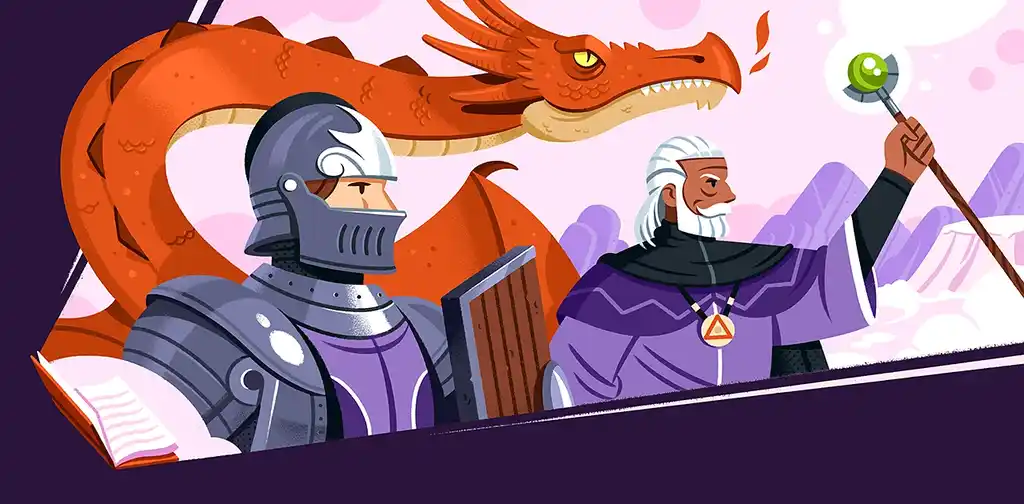
FREE COURSE
How to Write Fantasy Fiction
Learn to combine worldbuilding, plot, and character to create literary magic.
4. The Reluctant Hero
The protagonist is thrust down the path of a story they don’t wish to be a part of. They long to return to normal life and only continue on their quest out of obligation or necessity. Whether their reluctance stems from a desire to hold on to their old life or a lack of self-belief, these protagonists will eventually overcome their internal tribulations and allow greatness to be thrust upon them — just in the nick of time.
Example: The Lord of the Rings by J.R.R Tolkien
Samwise Gamgee is a reluctant hero for the ages. At first, we see him as a somewhat cowardly companion to the more classically heroic Frodo. (Sam would much rather be back in The Shire preparing Second Breakfast for his beloved Rosie.) But he soon rises to the challenge and proves himself among The Fellowship's bravest members.
Pro tip: Plant some seeds before you drop a surprise twist
“When playing with readers' assumed knowledge of common conventions, giving them a sense that the trope is being played out can allow us to subvert their expectations,” Jones says.
“We can play with the ending. And in some instances, when the ending arrives and defies the reader's expected outcome, they then remember all the seeds planted and subtle clues that led to it throughout the book. It’s about justification.”
5. The Lucky Novice
This sometimes manifests when a character who has never attempted a specific activity before is suddenly extremely talented at that specific skill. Other times it’s presented in the form of a protagonist — who’s had a moderate amount of training — defeating the villain who has been honing their powers for years or decades (or even centuries).
Q: What should I do if someone has already written a book with my idea?
Suggested answer
Write it anyway!
The market for books is huge and each writer's voice is unique. You will have a different way of presenting the informaiton or telling the story, even if it's similar to someone else's.
Alice is available to hire on Reedsy ⏺
Write a better book. There are many books written about the same topic, same ideas, same plots. You can't protect an idea, only the written expression of that idea. Go write your own book that is thoughtful, well-written, and thorough. A good book will find an audience.
Maria is available to hire on Reedsy ⏺
These sudden skills can be a byproduct of being the “Chosen One”— those skills might “run in their blood,” or the protagonist might have an inexplicable influx of energy and skill when their back is pushed against the wall.
Example: The Underland Chronicles by Suzanne Collins
Suzanne Collins’ pentalogy series follows Gregor, a boy from the hustling streets of New York. Our protagonist soon finds himself in the ‘Underland’ below the city. Discovering a prowess with the sword, which shouldn’t befit him, Gregor learns that he can tap into a berserk part of himself, allowing him to access this skill. However, it’s only accessible when his life is in mortal danger — a deficiency he realizes won’t help him save the say.
Pro Tip: Make their ‘luck’ related to their past
“Consider why your novice might be capable of certain things,” Lauren Humphries-Brooks says. “I always prefer to read a book where this is not based on heredity or innate ability, because the background can be so much more convincing.
Someone who has never held a sword will not be able to wield it perfectly on their first try, but someone who has scrapped on the streets will have combat experience.”
6. The Mentor
Usually an elderly character who prepares the protagonist for whatever conflict they are facing. The Mentor often leaves before the big climax — whether they are killed, retire, or leave to carry out a job elsewhere — forcing the protagonist to stand on their own two feet.
Example: The Wheel of Time by Robert Jordan
Moiraine Damodred is the mentor of Rand al’Thor (a Chosen One). On top of the dangers and responsibilities that come with mentoring Rand (and what he is), the help she can offer him is also limited. Because the type of magic they wield is different, the true value of Moiraine's mentorship lies in the human connection she forges with him.
Pro tip: At some point, the training wheels have to come off
While the mentor will give the hero some of what they need to succeed, at some point, it's crucial that they leave so that the protagonist can overcome their conflicts by themselves, according to Lesley Jones.
“The protagonist must be the one who takes action in the climax of the story. The lessons are proven true — and they can only do this without their mentor.”
Plot tropes
Plot is the chain of events that comprise your narrative arc. Many fantasy novels share a link or two (or seven) in common with other novels, and for good reason.
Q: What are some of the biggest misconceptions first-time authors have about writing fantasy?
Suggested answer
Fantasy, and in particular romantasy, is SO HOT right now. Everyone is writing it, but many new authors fall into the trap of exposition. Just because you're writing in a unique setting doesn't mean you have to explain this world to readers. At least, not all at once, and certainly not all in the first few chapters.
Fantasy especially can span multiple books and because you're already telling a unique story about unique characters, it's overwhelming and exhausting for readers to also swallow a unique world.
The best solution is show, don't tell. Let it happen organically, and at natural moments in the story. For example, a wizard walking into a cauldron shop may merit a few sentences as to why he's buying a new cauldron, but probably doesn't need the extra two pages of exposition regarding the cauldron's connection to his late mother, who was also a half-fae princess and died at the hands of his tyrannical father, but only after having a torrid affair with a werewolf whose daughter now owns the very same cauldron shop.
Alexandra is available to hire on Reedsy ⏺
You still need strong characters that propel the story forward. The fantastical elements don't replace a strong personal journey or transformation of your protagonist.
The fantastical elements you include should also have purpose and be used with intention. If there's a magic system, it has to make sense in the world. Magic can affect economics, culture, politics, and it should be reflected on the page.
With kidlit, take a look at fantasy published within the last few years. Western-based fantasies with gnomes, trolls, etc. are generally not unique enough to attract an agent or publisher's attention. Readers want to read about completely different worlds with unique magical/fantastical elements.
The best way to get a handle on today's fantasy and what agents and publishers might be interested in is to read titles published in the past couple years.
Kim is available to hire on Reedsy ⏺
For me, the main misconception is that the story world is the story. No. The characters are the story, no matter the genre. Fantasy authors can get too wrapped up in the world they have created - and why wouldn't they? It's an exciting thing to create - to the detriment of their story. So it's really important to, at some point, turn away a little from your story world and turn to your characters. Do they have motives? Goals? Fears? Desires? Secrets? Regrets? Flaws?
All the things that make us human (even if your character isn't human!) need to be on the page. It's very easy to lose sight of character and plot when writing fantasy, but no matter how outlandish, or unique, or captivating, your story world is, it's the characters who inhabit your world that truly count. It's the characters readers recall more than anything else. So my advice to fantasy writers is character first, always.
Louise is available to hire on Reedsy ⏺
Whenever a story leaps from the present day into a new world in another time, there has to be much more time, and therefore words, spent on world-building. The reader must be able to get a strong sense of this new world right away with sentences depicting the scenery and setting, what the characters look like, and how modern or primitive this new world is.
So, a misconception could be that coming up with a strong and unique plot line or characters is enough. While these are all necessary, everything in the "new world" must all make sense and be clear, and easy to understand. It must all be logical, and that takes time to plan. So, spending time planning and building up this new world with all of its new rules and exciting twists is something authors will also need to spend a fair amount of time on. And this goes beyond a basic outline or plot points.
Melody is available to hire on Reedsy ⏺
7. The “Here Comes the Cavalry” Twist
When all is lost, and the villain’s army is too strong. Moments before the inevitable death, our saviors arrive! And just as they say in the ol' westerns: here comes the cavalry!
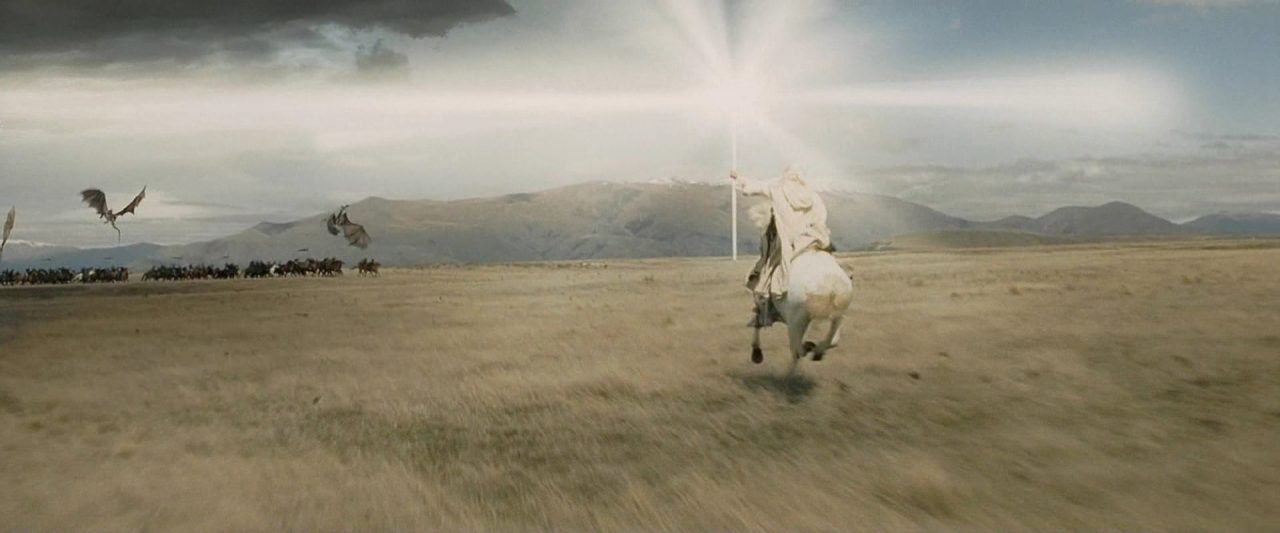
Example: The Lord of the Rings by J.R.R. Tolkien
A quintessential fantasy story, some of Tolkien’s epic’s best moments are its battle scenes. Why? Because Tolkien understood that action needed context — emotion. The Battle of Helm’s Deep is weighted with meaning. Betrayals and old alliances separate the parties here, not just land and sky — and to answer the call means to heal old wounds. Whether the aiding army will arrive in time, or if they’ll come at all, builds tension throughout each scene. But just as the sheer number of orcs overwhelm the party, dawn brings Gandalf and his epic army!
Pro tip: For knockout action scenes, fuel them with emotion
“Always set up the cavalry charge,” Humphries-Brooks says, reminding writers that surprise arrivals shouldn't come as a complete surprise. “It must be integrated into the overall plot arc so that when, or if, the cavalry comes swooping in, we know why. Where did they come from? How? Why?
"Knowing that the cavalry is approaching, and even that they might not get there in time, is far more exciting than their sudden appearance!”
8. The Waiting Evil
Long ago an evil force was defeated and locked away. Supposedly dead, it bides its time to break free and unleash vengeance. Once the cat’s out of the bag, it does not want to go back in.
Example: Duma Key by Stephen King
In Duma Key, the Master of Horror introduces us to the ancient evil force Perse, who has been sealed in a keg and dropped down a well. When our protagonist discovers the keg, they discover that it has all but leaked dry, and Perse has escaped.
Pro tip: Pair your evil with a great backstory to create a powerful character
“The Waiting Evil trope is often paired well with a great backstory for the villain,” Lesley Jones says. “Mixing together why the ‘evil’ was locked away, and understanding our villain can lead to a conflict of sympathies for our protagonist to battle emotionally. This is how you breathe life into an old trope.”
9. The Black and White Morality Theme
The battle between “good” and “evil” is a prevalent theme in fantasy — and with characters often directly opposing each other, it can be easy to play up the black and white trope. When it strays to a cliché is when the line between good and evil is perceived as black and white, with no grey area.
Example: Redwall by Brian Jacques
Brian Jacques’ middle-grade anthropomorphic fantasy series about the ‘good’ animals of Mossflower Wood (all 22 books) are children’s tales full of right and wrong stories. Whether learning that ‘right’ doesn’t always mean to ‘win’ — the animals learn that sometimes the shades of our world can only be understood alongside the black and white of it.
10. The Quest
The hero, and a handful of secondary cannon-fodders (sorry, characters), set out on a quest with a specific goal which must be achieved.
While similar to The Hero's Journey, the key difference is that the Quest focuses on your character's outer journey (and not the inner transformation of a hero). The result is that some of literature's greatest action books have begun from the simplest of mysteries.
Example: The Percy Jackson series by Rick Riordan
The Percy Jackson series follows Percy and his demigod friends as they fight mythological monsters on their quest to defeat Kronos, King of the Titans.
Pro tip: The right stakes can justify any quest
“Again, however outlandish the idea seems, or however frivolous the reason for the Quest, the overarching idea has to be believable,” Jones says. “There are many stories that begin following the smallest of inciting incidents, but if the protagonist doesn’t act, the stakes are huge — and become greater the longer the protagonist delays. This is what is needed for a quest, or any story. If they don’t act, everything is lost.
Think about Obi-Wan’s invitation to Luke at the beginning of the first (chronologically) Star Wars film – ‘A New Hope’. Luke is sure he will not follow the old Jedi, but then he rushes home to find that his uncle and aunt have been killed. If his quest was important before, it’s even more important now, and he agrees to follow Obi-Wan.”
🎵
Tell us about your book, and we'll give you a writing playlist
It'll only take a minute!
Worldbuilding tropes
While the many subgenres of fantasy will all have their own tropes, here are a few worldbuilding conventions you're bound to see more often.
11. The Pseudo-European Medieval Setting
A feudal system governing a society where taverns are frequented and duel-by-swords are a daily occurrence. The stories don't usually take place in actual Europe, but a world that very much resembles the continent’s medieval era. This setting is a mainstay of fantasy — significantly solidified in the genre by The Lord of the Rings, but harking back to European folklore and tales of King Arthur.
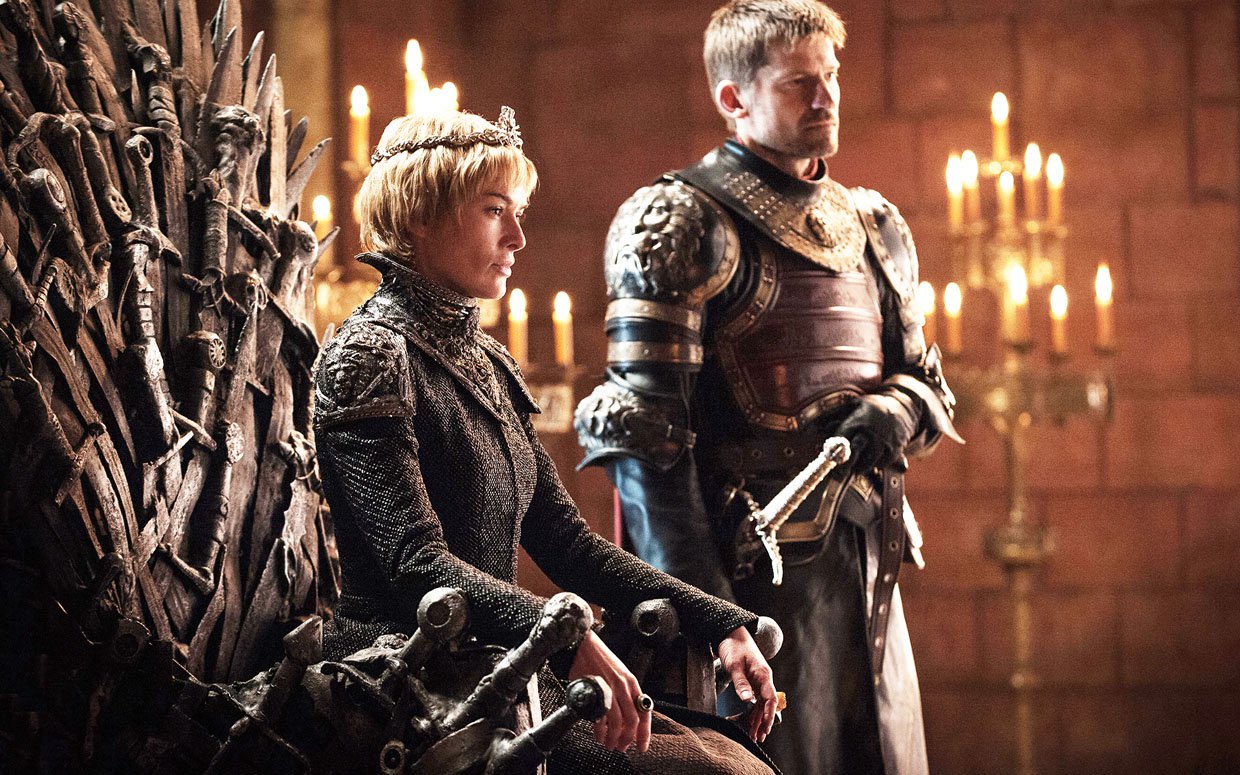
Example: A Song of Ice and Fire by George R. R. Martin
Set in Westeros — a world strikingly similar to medieval-era Europe and Renaissance Britain — this now classic grimdark fantasy (the subgenre made famous by A Song of Ice and Fire) is what put Martin on the map.
What made his world so refreshing is that he reconstructed that era's brutality. No one is safe. Characters die left, right, and center — and it is the ideas and realities of this world that create tensions for the reader. Problems can’t be solved the same way, nor should they be.
Q: How can authors protect their rights when publishing, especially in the age of AI?
Suggested answer
I don't think anyone can fully protect themselves. If you act in good faith you will find that most other people will do the same. There will always be rogues, but selling books is hard enough if you are the real author, even harder if you have stolen it.
Andrew is available to hire on Reedsy ⏺
Pro tip: To make your unreal world real, use the resonance of history as a base
“The influence of European folklore and tales of King Arthur are undeniable in fantasy,” Lesley Jones says. “Again, this comes back to believability, the conventions we expect in fantasy today are snippets of history from yesterday. These medieval worlds and realities are glimpses of what we learned about in school. This base helps immerse us in a foundation of something real.”
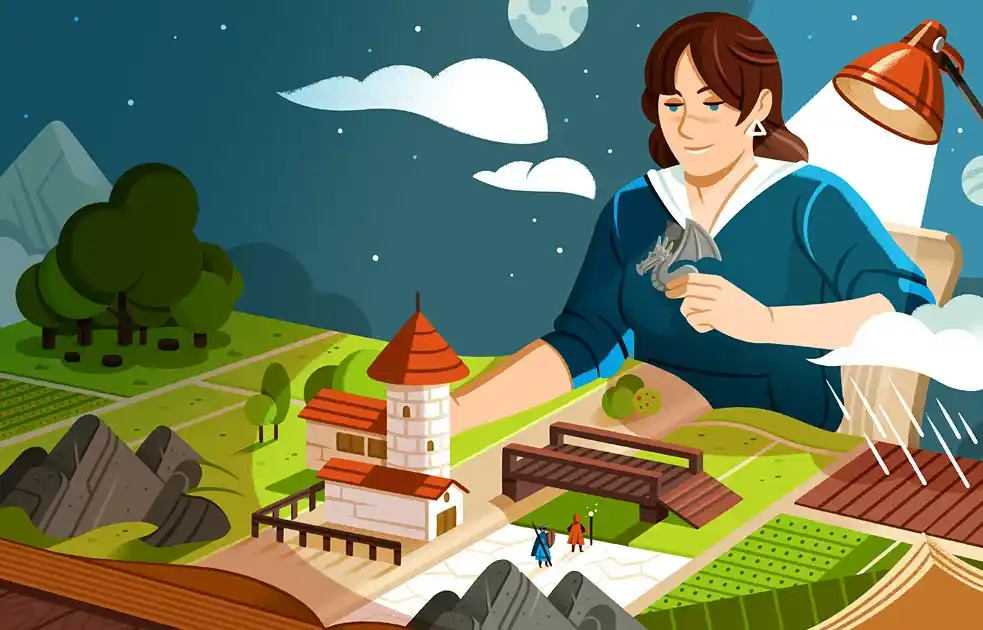
FREE RESOURCE
The Ultimate Worldbuilding Template
130 questions to help create a world readers want to visit again and again.
12. The World That Never Progresses
When a novel or series covers a society through the ages — but that world seems to never change or progress. It could be a century later, but no social, technological, political, or cultural developments seem to have occurred. This one is fairly typical of high fantasy, which usually take place on grand, epic scales.
Example: The Chronicles of Thomas Covenant series by Stephen R. Donaldson
Thomas Covenant, a man destined to save a world called ‘The Land,’ battles the impossible foe of time. This lack of worldly progress is key to Thomas' story as thousands of years pass in The Land when he is not there (and only months or years in the real world). The emotional impact of the jumps affects him deeply, and the static nature heightens the loss that continues to happen. The stakes increase each time as the continuing pause is worse than no evolution.
Pro tip: Change is slow, not static
“Consider how our world has changed and not changed over the years. If you set a book 1,000 years in the future, that’s the same amount of time that passed between the year 1023 and the year 2025. The world changed a lot during this period, which should be shown in your work. Don’t fall into the assumption that human (or any) society will remain static. If you can conceive of a world where magic is real, you can conceive of a world where women are treated as equals.”
Q: How do I choose the right genre for my book?
Suggested answer
My advice is to not worry about genre until you've written the manuscript. This way, you're writing with the passion you have for the story you want to tell, rather than trying to conform to the expectations of a certain genre that your story may or may not fit into. It complicates the drafting process.
When you're finished drafting, think about the kinds of books you've read that seem similar in style, tone, voice, pacing, structure, themes, etc. What bookshelves are they sitting on? What are they listed under on Amazon and Goodreads? Google them, like this: What genre is [Title of Book] by [Author Name]? You might get a few different genres in the search results, and that's ok. Once you have a list of possible books with an established pattern of genres, you can start to narrow down where yours might sit.
Research the traditional elements, themes, and expectations of that genre. Does yours contain those same qualities? We also tend to write stories in the same style as some of our favourite authors and books that we gravitate toward, so take a look at some of their books. Does it seem to have some similarities?
Once you nail down some good comparable titles, you'll be able to narrow down your story's genre. Don't compare the plot; instead, look for story elements. If you'll be pitching your book to agents, you'll want to choose two strong comp titles (with author names) to use in the query letter, and the genre of these books typically must match the genre in which you're pitching your book. This helps the agent determine what kind of a story they're in for as they get into the plot paragraphs and allows them to envision where it might sit on bookshelves. This can also be useful for marketing purposes when it comes time.
So: story first, genre later!
Kathleen is available to hire on Reedsy ⏺
There are two ways to look at this. First, you want to play to your strengths. Have you gotten good feedback for your fantasy stories? What genre is easiest for you to plot and write in? What genre gets you excited?
Second, you want to "go where they are not." This was advice received from young adult author and multiple award-winner, Richard Peck when attending a writing retreat. If there is a glut of westerns in the market, for instance, with lots of competition, you may want to steer clear of this genre. However, if this genre has books flying off the shelves and selling like hot cakes, it might be time to throw your hat in the ring if this is something you enjoy writing.
Overall, writers tend to do better when they write what they know and read, and write stories they really want to tell.
Finally, another question to ask yourself is, "What is the story only I can write?" And then try writing that story.
Melody is available to hire on Reedsy ⏺
13. The Powerful Artifact
This convention is used across all types of genres: an object of great power must be saved from falling into the wrong hands. The object is typically inanimate and derives its power from the manipulation of those who use it. The object might not be inherently evil, but its powers can have the effect of tempting and corrupting even the noblest characters.
Example: The Neverending Story by Michael Ende
The Auryn medallion given to Bastian in The Neverending Story is not an evil artifact, but its power affects humans differently than the Fantastican inhabitants of Fantasia. For humans, the wishes are granted at the cost of losing one’s memories.
As artifacts like this are desired for their use, the need often overshadows the price, and it’s this trap young Bastian falls into. He believes he must continue to use the medallion despite the loss. Only when Atreyu teaches him that “means without purpose is meaningless” does he recognize that not all prices are fair.
Pro tip: The greater the power, the greater the consequence, the greater the conflict
“It’s desire manifest in reality, essentially,” says Lesley Jones. “And an object that can make the impossible real, or conjure dreams into existence must have a price. Only if the consequences are as grand (positive or negative) as the power can it be believable, but no hero ever thinks about the consequences until there’s no going back.”
14. The Races of Fantasy
Example: Legends & Lattes by Travis Baldree
This world of goblins, faes, elves, dwarves, trolls, orcs, humans, and monsters — fits at home in any fantasy book. All living their stereotypical and expected lives, our protagonist, Viv, is an anomaly. She indeed does spend her days hunting and slaying, yet also dreams of retiring and opening a cafe — a very humane dream. And once the cafe opens, she meets many other inhabitants subverting their fated lives and expectations. The book utilizes many fantasy book tropes and expectations of readers to tell a tale that is just as enlightening as it is amusing.
Pro tip: Give all your races relateable needs and wants
“Fantasy races play with long-established tropes, often reaching back into folk tales, superstitions, and oral history,” Lauren Humphries-Brooks says. “So knowing where your tropes come from in the first place can help in developing your ideas and characters from that — either as subversions or as extensions of the trope. Take the established ‘facts’ about fantasy races and spin them out.”
🧙🏼♂️ Hire pro fantasy editors on Reedsy to improve your novel!
Dan H.
Available to hire
Professional editor of SFF/Horror. Have worked with bestselling authors Shauna Lawless, Gemma Amor, Stacey McEwan. (No AI please.)
Chris U.
Available to hire
I am an expert in genre fiction, with years of experience evaluating short fiction. I want your wildest stories to find a published home.
Laura S.
Available to hire
Editor and published author (Penguin Random House, Simon and Schuster) with over a decade of experience. Expert in novel and query edits.






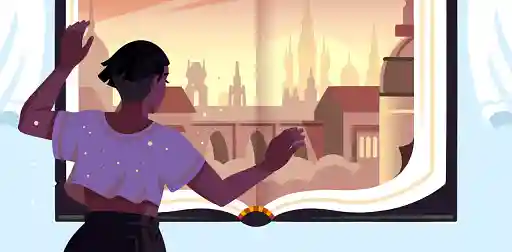


9 responses
D. D. Syrdal says:
05/09/2018 – 23:25
This is excellent, lots of food for thought!
Renderman72 says:
10/09/2018 – 18:55
Awesome article! Really found this insightful!
Joshua Randle says:
13/11/2018 – 03:37
I just reread the first chapter of Lord of the Rings and the first scene is a bunch of old hobbits in hobbiton talking shit about the hobbits in Buckland. Not really the "homogeneous speces" actually.
BMWilborn says:
06/06/2019 – 16:21
A couple small corrections. Speaker for the Dead included lots of space travel, not so much time travel. And the White Witch had at least some origination story in The Magician's Nephew.
Vipul Chaube says:
06/09/2019 – 17:35
Which school teaches tropes, etc.? Any professors? Want to know more.
Dementor says:
25/11/2019 – 21:20
We have a story writing competition, and this article helped me a lot
Kronos says:
04/01/2020 – 22:03
For my story, what I'm doing, is that my "mentor" is actually a retired dwarf who makes really bad egg sandwiches and is very sarcastic and cares mostly about himself. Is that a good idea?
↪️ Martin Cavannagh replied:
07/01/2020 – 10:00
Well... like all ideas, it's all in the execution. If it's something that grabs you, then go for it and make it best you can! Just remember that with all sarcastic, self-centered characters, it's always worth asking the question of why they are the way they are. Good luck!
Paperclip says:
18/07/2020 – 16:56
A better explanation of the tropes than the jerks I spoke to on Reddit. Great Explaining!